Xiangyi Meng
Boston University
Hidden Citations Obscure True Impact in Science
Oct 24, 2023Abstract:References, the mechanism scientists rely on to signal previous knowledge, lately have turned into widely used and misused measures of scientific impact. Yet, when a discovery becomes common knowledge, citations suffer from obliteration by incorporation. This leads to the concept of hidden citation, representing a clear textual credit to a discovery without a reference to the publication embodying it. Here, we rely on unsupervised interpretable machine learning applied to the full text of each paper to systematically identify hidden citations. We find that for influential discoveries hidden citations outnumber citation counts, emerging regardless of publishing venue and discipline. We show that the prevalence of hidden citations is not driven by citation counts, but rather by the degree of the discourse on the topic within the text of the manuscripts, indicating that the more discussed is a discovery, the less visible it is to standard bibliometric analysis. Hidden citations indicate that bibliometric measures offer a limited perspective on quantifying the true impact of a discovery, raising the need to extract knowledge from the full text of the scientific corpus.
New metal-plastic hybrid additive manufacturing strategy: Fabrication of arbitrary metal-patterns on external and even internal surfaces of 3D plastic structures
Dec 22, 2021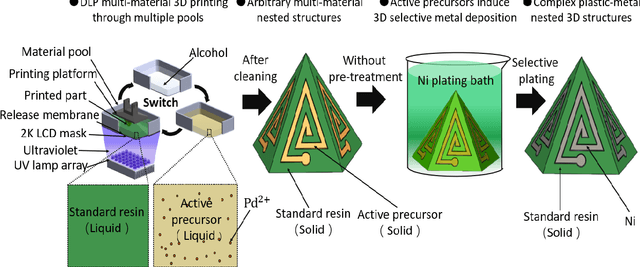
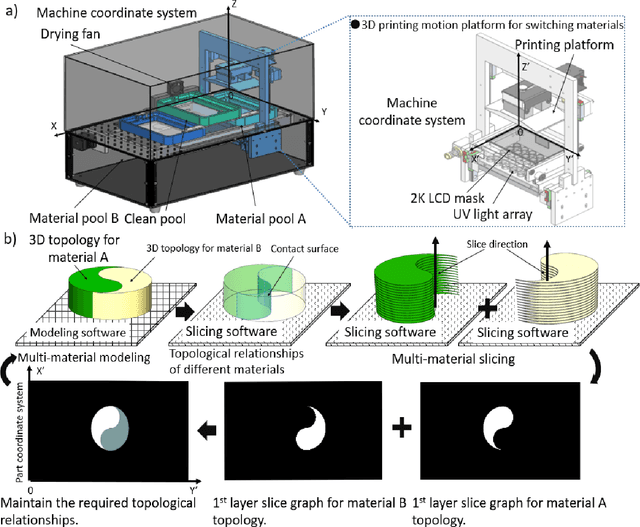
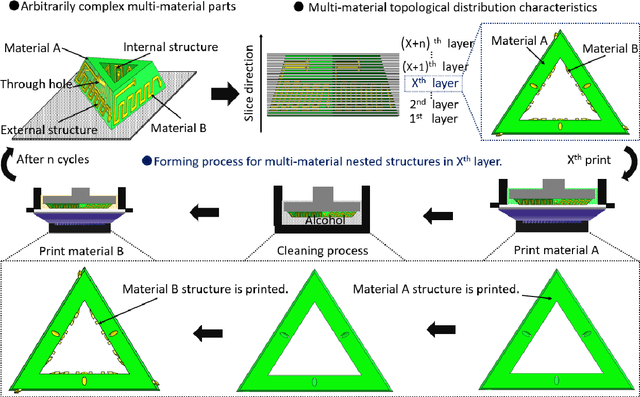
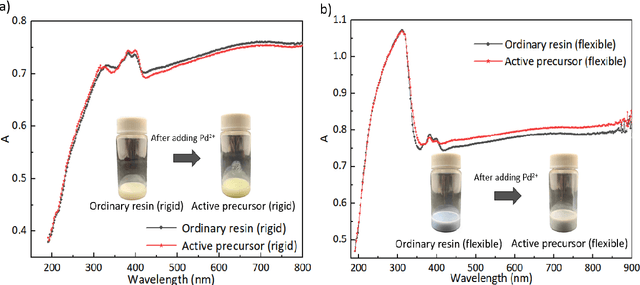
Abstract:Constructing precise micro-nano metal patterns on complex three-dimensional (3D) plastic parts allows the fabrication of functional devices for advanced applications. However, this patterning is currently expensive and requires complex processes with long manufacturing lead time. The present work demonstrates a process for the fabrication of micro-nano 3D metal-plastic composite structures with arbitrarily complex shapes. In this approach, a light-cured resin is modified to prepare an active precursor capable of allowing subsequent electroless plating (ELP). A multi-material digital light processing 3D printer was newly developed to enable the fabrication of parts containing regions made of either standard resin or active precursor resin nested within each other. Selective 3D ELP processing of such parts provided various metal-plastic composite parts having complicated hollow micro-nano structures with specific topological relationships on a size scale as small as 40 um. Using this technique, 3D metal topologies that cannot be manufactured by traditional methods are possible, and metal patterns can be produced inside plastic parts as a means of further miniaturizing electronic devices. The proposed method can also generate metal coatings exhibiting improved adhesion of metal to plastic substrate. Based on this technique, several sensors composed of different functional nonmetallic materials and specific metal patterns were designed and fabricated. The present results demonstrate the viability of the proposed method and suggest potential applications in the fields of smart 3D micro-nano electronics, 3D wearable devices, micro/nano-sensors, and health care.
Entanglement-Embedded Recurrent Network Architecture: Tensorized Latent State Propagation and Chaos Forecasting
Jun 10, 2020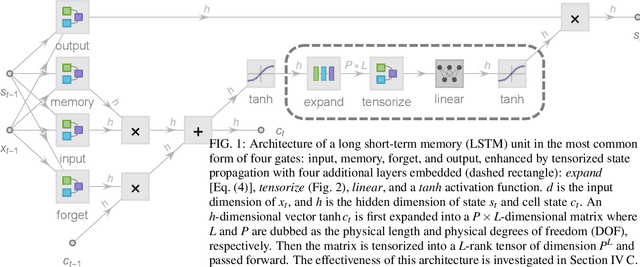
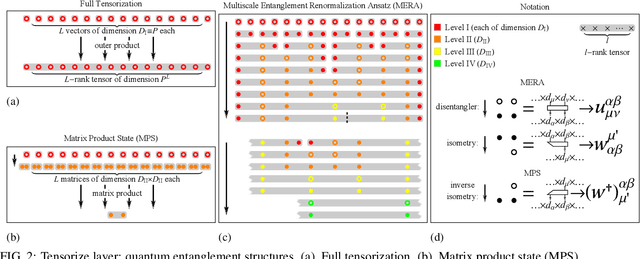
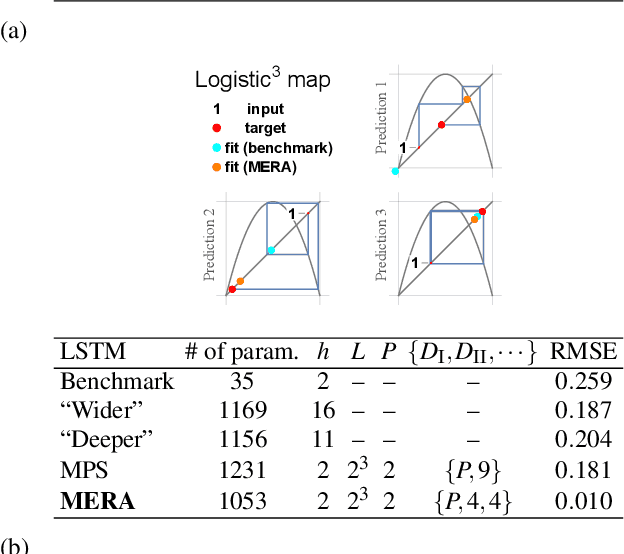
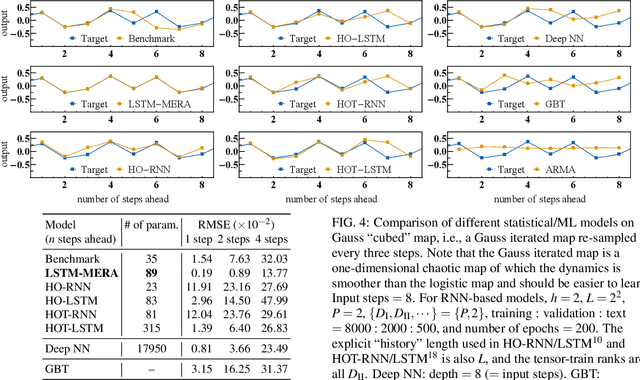
Abstract:Chaotic time series forecasting has been far less understood despite its tremendous potential in theory and real-world applications. Traditional statistical/ML methods are inefficient to capture chaos in nonlinear dynamical systems, especially when the time difference $\Delta t$ between consecutive steps is so large that a trivial, ergodic local minimum would most likely be reached instead. Here, we introduce a new long-short-term-memory (LSTM)-based recurrent architecture by tensorizing the cell-state-to-state propagation therein, keeping the long-term memory feature of LSTM while simultaneously enhancing the learning of short-term nonlinear complexity. We stress that the global minima of chaos can be most efficiently reached by tensorization where all nonlinear terms, up to some polynomial order, are treated explicitly and weighted equally. The efficiency and generality of our architecture are systematically tested and confirmed by theoretical analysis and experimental results. In our design, we have explicitly used two different many-body entanglement structures---matrix product states (MPS) and the multiscale entanglement renormalization ansatz (MERA)---as physics-inspired tensor decomposition techniques, from which we find that MERA generally performs better than MPS, hence conjecturing that the learnability of chaos is determined not only by the number of free parameters but also the tensor complexity---recognized as how entanglement entropy scales with varying matricization of the tensor.
 Add to Chrome
Add to Chrome Add to Firefox
Add to Firefox Add to Edge
Add to Edge